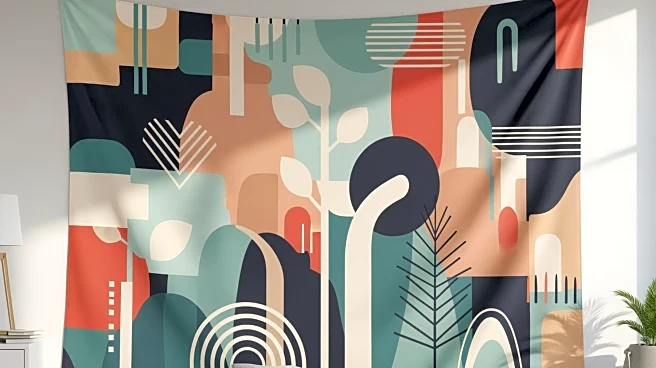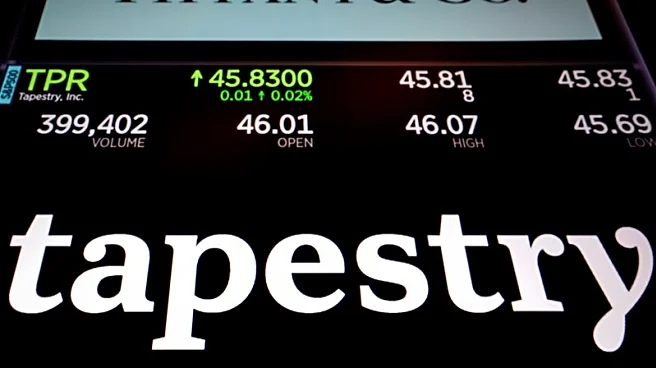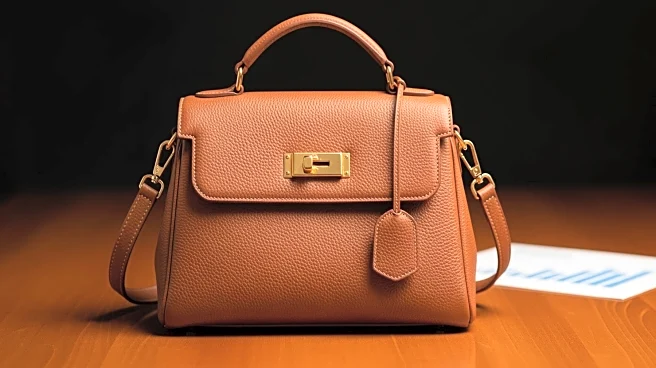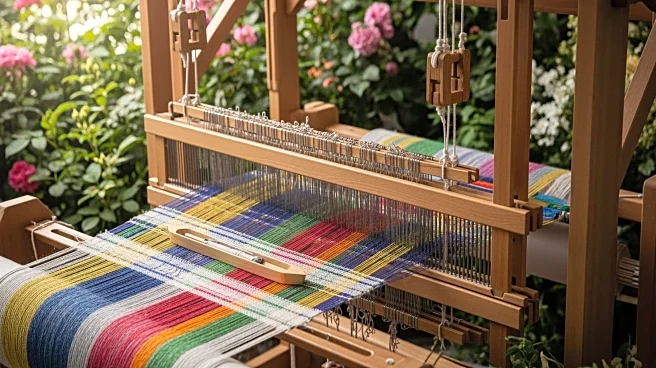What's Happening?
Tapestry, the parent company of Coach, has reported a significant increase in its customer base, driven largely by Gen Z consumers. In its fiscal 2026 first quarter, the company acquired over 2.2 million
new customers globally, with Gen Z accounting for about 35% of these new additions. This demographic, typically aged between 13 and 29, is showing a strong engagement with fashion, spending more of their budget on fashion items. Tapestry's CEO, Joanne Crevoiserat, highlighted that the company's sales were bolstered by attracting these younger customers, who also demonstrate high retention rates. Despite a broader trend of reduced spending among younger consumers, as seen with companies like Chipotle and Cava, Gen Z continues to invest in fashion accessories such as Coach handbags.
Why It's Important?
The shift in spending habits among Gen Z consumers is significant for the fashion industry, as it indicates a preference for premium and durable products over fast food and other consumables. This trend could lead to sustained growth for companies like Tapestry that cater to these preferences. The increased spending on fashion by Gen Z, despite economic pressures such as student loan repayments and higher unemployment rates, suggests a prioritization of fashion in their budgets. This could influence other fashion brands to adjust their strategies to capture this market segment. Additionally, the high retention rate of Gen Z customers challenges the notion that this demographic lacks brand loyalty, potentially reshaping marketing strategies across industries.
What's Next?
Tapestry has raised its full-year financial outlook, expecting revenue to reach around $7.3 billion, reflecting a 4% to 5% growth from the previous year. The company also anticipates higher earnings per share, adjusting its guidance to a range of $5.45 to $5.60. Despite these positive projections, Tapestry's shares fell about 9% in premarket trading, indicating potential investor concerns. As Gen Z continues to influence market trends, other companies may need to reassess their strategies to align with the spending habits of this demographic. The broader economic environment, including factors like unemployment and student loan repayments, will also play a role in shaping consumer behavior moving forward.
Beyond the Headlines
The spending patterns of Gen Z could have long-term implications for the retail and fashion industries. As this generation matures, their preferences for quality and brand engagement may drive a shift away from fast fashion towards more sustainable and premium options. This could lead to increased competition among brands to capture and retain this valuable customer base. Additionally, the emphasis on fashion over other spending categories highlights the cultural importance of personal style and self-expression among younger consumers, potentially influencing future trends in product development and marketing.












